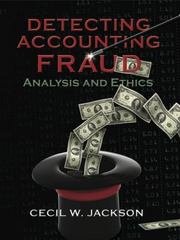I need help completing this. Thank you.
Process Costing and the Weighted-Average Method using Excel's SUM and Basic Math Functions Hayword, Inc. uses weighted-average costing and has two departments and has provided data related to its mixing department for the month of July. The Controller has asked you prepare a cost reconciliation report and provide the related computations. Use the Information Included in the Excel Simulation and the Excel functions described below to complete the task. Cell Reference: Allows you to refer to data from another cell in the worksheet. From the Excel Simulation be on below, If in a blank cell, *=B5" was entered, the formula would output the result from cell B5, or 300 in this example. Basic Math functions: Allows you to use the basic math symbols to perform mathematical functions. You can use the following keys: + (plus sign to add), - (minus sign to subtract), * (asterisk sign to multiply), and / (forward slash to divide). From the Excel Simulation below, if in a blank cell *=B9+B10" was entered, the formula would add the values from those cells and output the result, or 17,250 in this example. If using the other math symbols the result would output an appropriate answer for its function. SUM function: Allows you to refer to multiple cells and adds all the values. You can add individual cell references or ranges to utilize this function. From the Excel Simulation below, If in a blank cell "=SUM(B13,B14)" was entered, the formula would output the result of adding those two separate cells, or 737,320 in this example. Similarly, if in a blank cell *=SUM(B13:B14)" was entered, the formula would output the same result of adding those cells, except they are expressed as a range in the formula, and the result would be 737,320 in this example. FILE HOME INSERT RT PAGE LAYOUT FORMULAS DATA VIEW FILE HOME INSERT PAGE LAYOUT FORMULAS DATA REVIEW VIEW Sign In 9 6 Calibri 11 -A" A = % 79 86 Calibri -11 - A" A % Paste BI U . . . A - Alignment Number Number Formatting " Table . Styles - Editing Paste Bru - - - A - Alignment Number Conditional Format as atting " Table - Styles - Cells Editing Clipboard Font styles Clipboard Styles A1 vix v fx Hayword, Inc. uses weighted-average costing and has two departments - mixing A1 vi X V fx Hayword, Inc. uses weighted-average costing and has two departments - mixing Hayword, Inc. uses weighted-average costing and has two departments - mixing and packaging 2 The following information relates to work in the mixing department for the month of July: Equivalent units of production 48 Cost per equivalent unit 4 Work in process, July 1: 49 Cost of ending work in process inventory units in process Percent completed with respect to materials 51 Units completed and transferred out; Percent completed with respect to conversion 4096 Units transferred to the next department Cost in the beginning inventory: ces Materials cost Cost per equivalent unit 10 C $10,500 4 Cost of units transferred out Conversion cost $6 , 750 55 1 Units started into pro 6,200 12 Costs added to production during the period: 56 4. Prepare reconciliation. 3Materials cost 330,912 58 Mixing Department Cost Reconciliation 14 Conversion cost 406,408 ork in process, July 31: 59 Costs to be accounted for: its in process 450 Cost of beginning work in process inventory 17 Percent completed with respect to materials 40% duction during the period Percent completed with respect to conversion 309% Total cost to be accounted for 63 Costs accounted for as follows: 10 Use the data to answer the following. 64 Cost of ending work in process inventory 65 Cost of units transferred out 22 1. Compute equivalent units. 66 Total cost accounted for Mixing Department 67 Equivalent Units of Production 68 Materials Conversion 69 26 Units transferred to the next department " . Sheeti ... + Paste B I U - - - A - Alignment Number oneona eagles Cells Editing ".. Sheeti ... + Clipboard Font Styles A1 " : x x Hayword, Inc. uses weighted-average costing and has two departments - mixing 26 Units transferred to the next department 27 Ending work in process: 28 Materials 29 Conversion 30 Equivalent units of production 31 32 2. Compute cost per equivalent unit. 33 Mixing Department Cost per Equivalent Unit Materials Conversion 36 Cost of beginning work in process 57 Cost added during the period 38 Total cost 39 Equivalent units of production 40 Cost per equivalent unit 42 3. Assign costs . Mixing Department Costs of Ending Work in Process Inventory and the Units Transferred Out Materials Conversion Total ocess inventory: Equivalent units of pr 48 Cost per equivalent unit Cost of ending work in process inventory 1 Units completed and transferred out: ... Sheeti ...+ READY Attempt(s)







